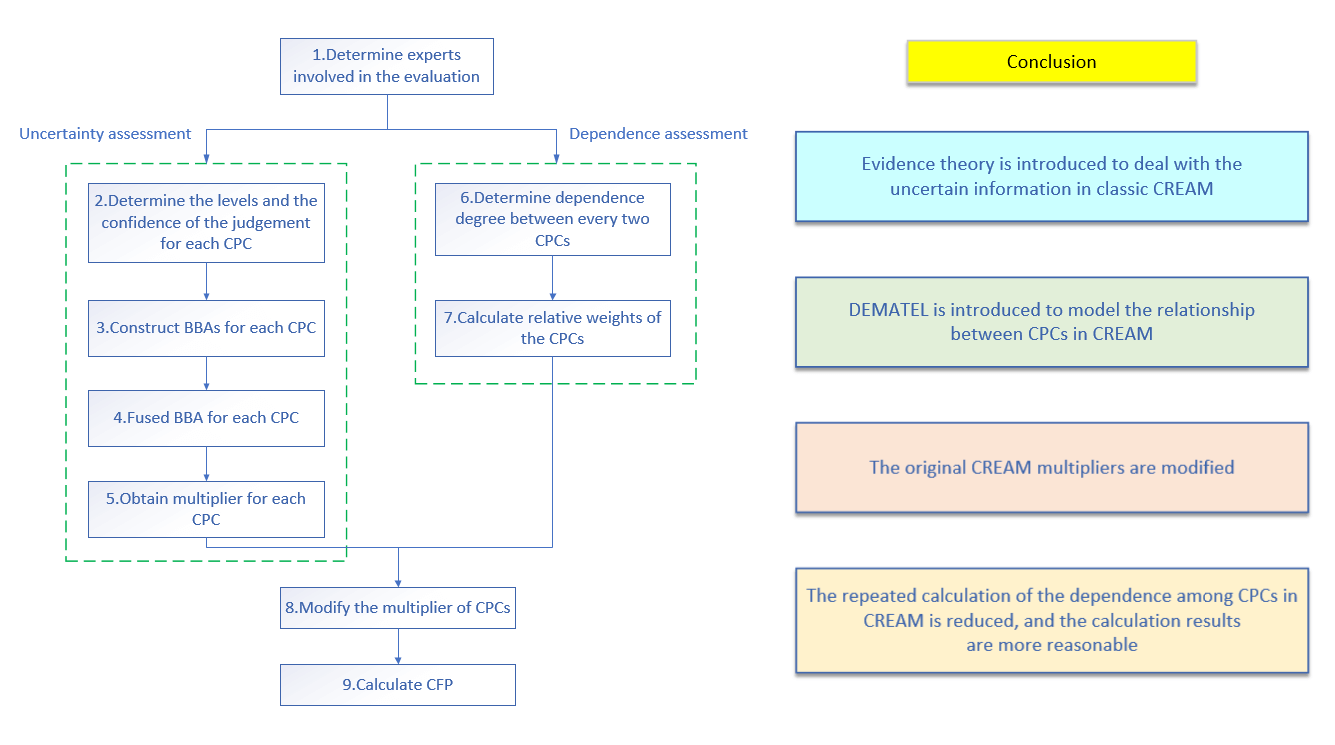 Open Access
Open Access
ARTICLE
An Improved CREAM Model Based on DS Evidence Theory and DEMATEL
1 State Key Laboratory of Nuclear Power Safety Monitoring Technology and Equipment, Shenzhen, 518172, China
2 School of Automation Engineering, Shanghai University of Electric Power, Shanghai, 200090, China
3 School of Safety and Management Engineering, Hunan Institute of Technology, Hengyang, 421002, China
* Corresponding Author: Xiaoyan Su. Email:
(This article belongs to the Special Issue: Computer-Aided Uncertainty Modeling and Reliability Evaluation for Complex Engineering Structures)
Computer Modeling in Engineering & Sciences 2024, 138(3), 2597-2617. https://doi.org/10.32604/cmes.2023.031247
Received 25 May 2023; Accepted 17 July 2023; Issue published 15 December 2023
Abstract
Cognitive Reliability and Error Analysis Method (CREAM) is widely used in human reliability analysis (HRA). It defines nine common performance conditions (CPCs), which represent the factors that may affect human reliability and are used to modify the cognitive failure probability (CFP). However, the levels of CPCs are usually determined by domain experts, which may be subjective and uncertain. What’s more, the classic CREAM assumes that the CPCs are independent, which is unrealistic. Ignoring the dependence among CPCs will result in repeated calculations of the influence of the CPCs on CFP and lead to unreasonable reliability evaluation. To address the issue of uncertain information modeling and processing, this paper introduces evidence theory to evaluate the CPC levels in specific scenarios. To address the issue of dependence modeling, the Decision-Making Trial and Evaluation Laboratory (DEMATEL) method is used to process the dependence among CPCs and calculate the relative weights of each CPC, thus modifying the multiplier of the CPCs. The detailed process of the proposed method is illustrated in this paper and the CFP estimated by the proposed method is more reasonable.Graphic Abstract

Keywords
Cite This Article
 Copyright © 2024 The Author(s). Published by Tech Science Press.
Copyright © 2024 The Author(s). Published by Tech Science Press.This work is licensed under a Creative Commons Attribution 4.0 International License , which permits unrestricted use, distribution, and reproduction in any medium, provided the original work is properly cited.


 Submit a Paper
Submit a Paper Propose a Special lssue
Propose a Special lssue View Full Text
View Full Text Download PDF
Download PDF Downloads
Downloads
 Citation Tools
Citation Tools